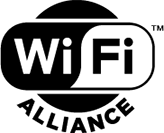Wi-Fi 7 brings advanced Wi-Fi® performance to the next era of connected devices. In this new blog series, we’ll explore how Wi-Fi 7 enables innovation across various market segments.
Wi-Fi® in 6 GHz is transforming healthcare in ways that will help reduce the current burden on clinical staff. Healthcare systems are experiencing staff shortages and looking for ways to improve efficiency while still providing best-in-class patient care. 6 GHz Wi-Fi, which includes Wi-Fi 6E and Wi-Fi 7, provides increased bandwidth, capacity, and improved network efficiency to support a new era of healthcare by facilitating seamless transmission of large medical data files, enabling real-time patient monitoring and diagnostics, and delivering crucial telemedicine to users in remote locations. With the technology advancements available today, Wi-Fi 6E and Wi-Fi 7 enabled medical devices used by clinical staff will help enhance patient care outcomes and operational efficiency in healthcare environments.
burden on clinical staff. Healthcare systems are experiencing staff shortages and looking for ways to improve efficiency while still providing best-in-class patient care. 6 GHz Wi-Fi, which includes Wi-Fi 6E and Wi-Fi 7, provides increased bandwidth, capacity, and improved network efficiency to support a new era of healthcare by facilitating seamless transmission of large medical data files, enabling real-time patient monitoring and diagnostics, and delivering crucial telemedicine to users in remote locations. With the technology advancements available today, Wi-Fi 6E and Wi-Fi 7 enabled medical devices used by clinical staff will help enhance patient care outcomes and operational efficiency in healthcare environments.
Key features and benefits of 6 GHz Wi-Fi in healthcare
Wi-Fi 6E and its use of 6 GHz spectrum offers significant performance improvements, and this is especially true of Wi-Fi enabled medical devices. More channels are available thanks to the additional spectrum capacity of contiguous blocks in 6 GHz, meaning wireless networks operating in the band benefit from reduced congestion, which is vital for applications that demand high data throughputs. Furthermore, healthcare facilities with access to 6 GHz spectrum will have the option to segment channels by device type, allocating separate channels for medical devices, smartphones with patient alerts, and guest traffic as well, resulting in reduced congestion on any given channel and higher performance for the devices operating within it.
Orthogonal Frequency Division Multiple Access (OFDMA) is a key feature of Wi-Fi 6 that enhances the efficiency and performance of wireless communication by dividing the available frequency spectrum into smaller subcarriers and allocating them to multiple users simultaneously. The available spectrum is further divided into resource units (RUs), each consisting of one or more subcarriers. RUs can be dynamically allocated to different users based on their traffic requirements, channel conditions, and quality of service (QoS) needs. The access points (APs) can then dynamically allocate RUs to users based on their traffic demands and channel conditions, significantly improving the efficiency, capacity, and performance of wireless networks – especially necessary for the complex demands of a health system.
Wi-Fi 7 also benefits from 6 GHz spectrum, and one of its new features will significantly impact the healthcare sector. Multi-link Operation (MLO) allows medical devices to establish and maintain multiple concurrent links with the same or different APs or devices. When a medical device utilizes MLO, it can redundantly send critical patient data on multiple channels separated by frequency band (i.e., one in the 2.4 GHz channel and one in the 6 GHz channel). This allows the receiving device two opportunities to successfully receive data sent over Wi-Fi, resulting in a more reliable connectivity experience for medical devices if one AP becomes impaired (e.g., heavily loaded with clients) or during the roaming process.
Challenges and considerations of 6 GHz Wi-Fi in medical settings
With the introduction of Wi-Fi in 6 GHz, health systems will have to contend with a new set of challenges. Although there have been marked improvements made over the past year, 6 GHz spectrum is not yet globally harmonized for Wi-Fi use. Each region deploying 6 GHz APs will need to make sure the devices connecting to the health system’s Wi-Fi network infrastructure support the full channel set for that region. If a device operates on a 6 GHz Wi-Fi channel list that is a subset of what the healthcare Wi-Fi infrastructure supports, the device may have difficulty connecting in some areas.
Also, health systems must comply with HIPAA and other cybersecurity standards to protect patient data. Wi-Fi 6 and Wi-Fi 6E introduced mandatory support for highly secure WPA3, so healthcare IT departments will need to carefully deploy Wi-Fi 6 and Wi-Fi 6E capable networks if support for legacy medical devices still utilizing lower security methods (e.g., WPA2) is clinically necessary within a health system.
6 GHz lays the foundation for the future of patient care
Wi-Fi 6E and Wi-Fi 7 technology advancements are here today. Increasing bandwidth, capacity, and efficiency will drive reliability improvements critical to healthcare applications, including patient monitors streaming low bandwidth, low latency physiologic patient data in a remote location, and imaging devices sending high resolution images for on-the-spot diagnoses. These improvements will result in increased confidence in Wi-Fi enabled medical devices with clinical staff (i.e., Wi-Fi just works) and improved clinical workflow efficiency through greater access to physiological data. In today’s environment where clinical staff are understaffed and overworked, these Wi-Fi enhancements couldn’t come at a better time. The future is bright for Wi-Fi in the healthcare setting.
The statements and opinions by each Wi-Fi Alliance member and those providing comments are theirs alone, and do not reflect the opinions or views of Wi-Fi Alliance or any other member. Wi-Fi Alliance is not responsible for the accuracy of any of the information provided by any member in posting to or commenting on this blog. Concerns should be directed to info@wi-fi.org.




Add new comment